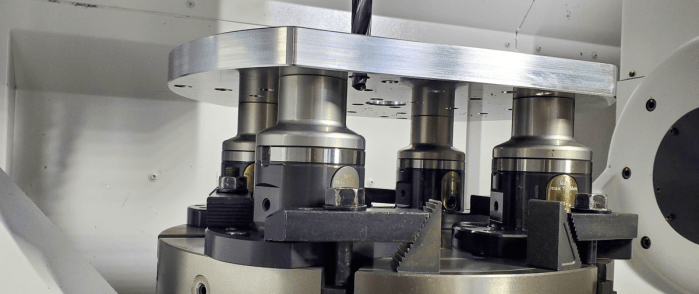Choosing the perfect work holding device is an art that can greatly impact the results of your projects. To streamline this process effectively, it is crucial to consider four critical factors that will guide you towards making informed decisions.
Part Size
The size of your part is a key factor in selecting the right workholding device, such as Mitee-Bite clamps. Striking the ideal balance between stability and accessibility is essential. Large fixtures provide rigid holding but may limit accessibility, while small fixtures can compromise stability.
If you deal with too-small or oversized parts, you may consider palletizing multiple items for smaller pieces, while modular upgrades or custom additions can accommodate larger sizes. Understanding the size requirements of your parts will ensure proper workholding and efficient machining operations.
Part Shape and Material Condition
Consider the shape and material status of your parts during the selection process. Different parts require specific workholding methods. For prismatic parts with flat sides, a vyse often works well. On the other hand, round pieces may require alternative holding methods such as lathe chucks or V-blocks.
Additionally, the condition of the material, whether it is raw, castings, or partially finished, necessitates different handling approaches to ensure accuracy. Taking these factors into account will lead you to the most suitable workholding solution.
Production and Mix Levels
The third tip involves considering the production and mix levels of your operations. Analyze how frequently part changeovers occur and the complexity of these transitions. If you have high-quantity runs or a diverse range of parts, the frequency of switchovers will increase.
Therefore, it is crucial to gauge how quickly your workholding device can adjust to different configurations. Opting for workholding solutions that offer efficient and rapid changeover capabilities will enhance productivity and minimize downtime.
Level of Operator Interaction with Workholding
Assessing the level of operator interaction with the workholding devices is vital. Consider the degree of automation in your loading or clamping processes. If you plan to invest in shop automation for machining tasks, the role of workholding devices becomes even more important. Understand the number of operators involved and their experience levels, as these factors influence the ease of use and compatibility of the chosen workholding device. Prioritizing user-friendly and intuitive solutions will contribute to smoother operations and reduced errors.
When embarking on the mission to select the ideal workholding device, always prioritize your project’s specific needs. Durability and versatility should be key considerations whenever possible. Remember that the ease of adjustment can save hours in production time, so opt for solutions that offer quick and efficient setup changes.
Lastly, never underestimate the value of product support services provided by companies like Suncoast Precision Tools or Mitee-Bite. Their expertise and guidance can be invaluable in making informed decisions and ensuring the success of your workholding endeavors.

















